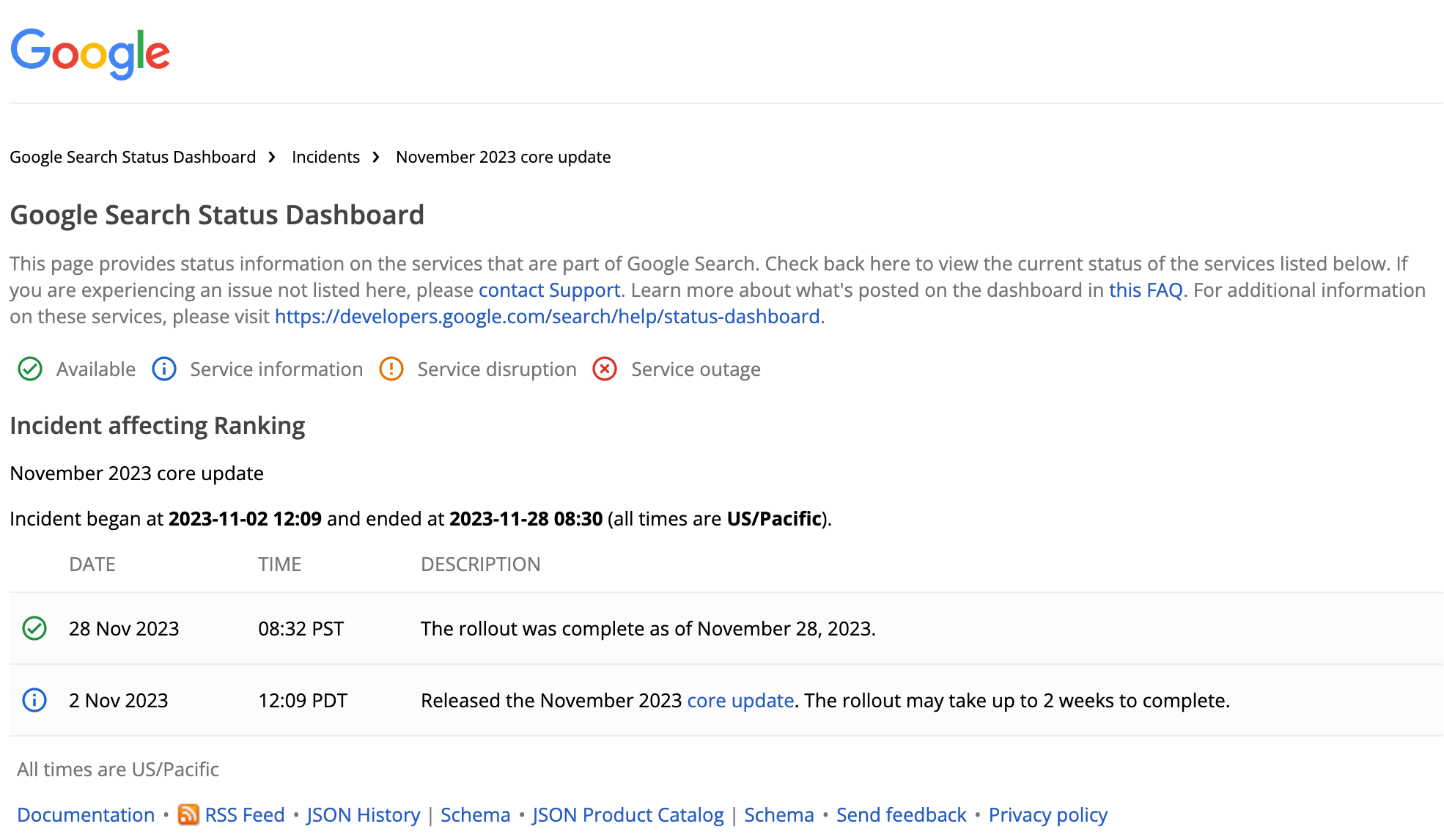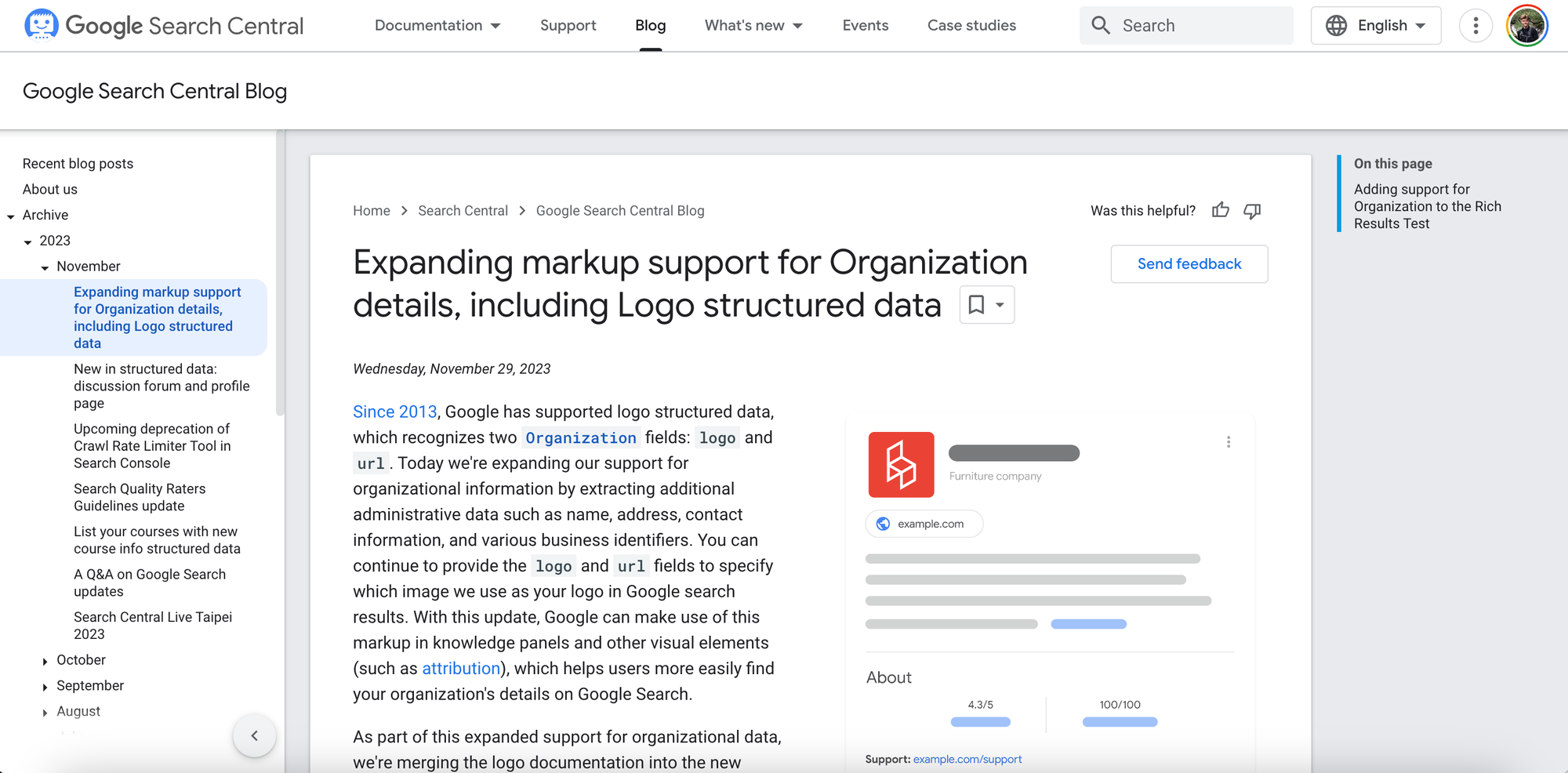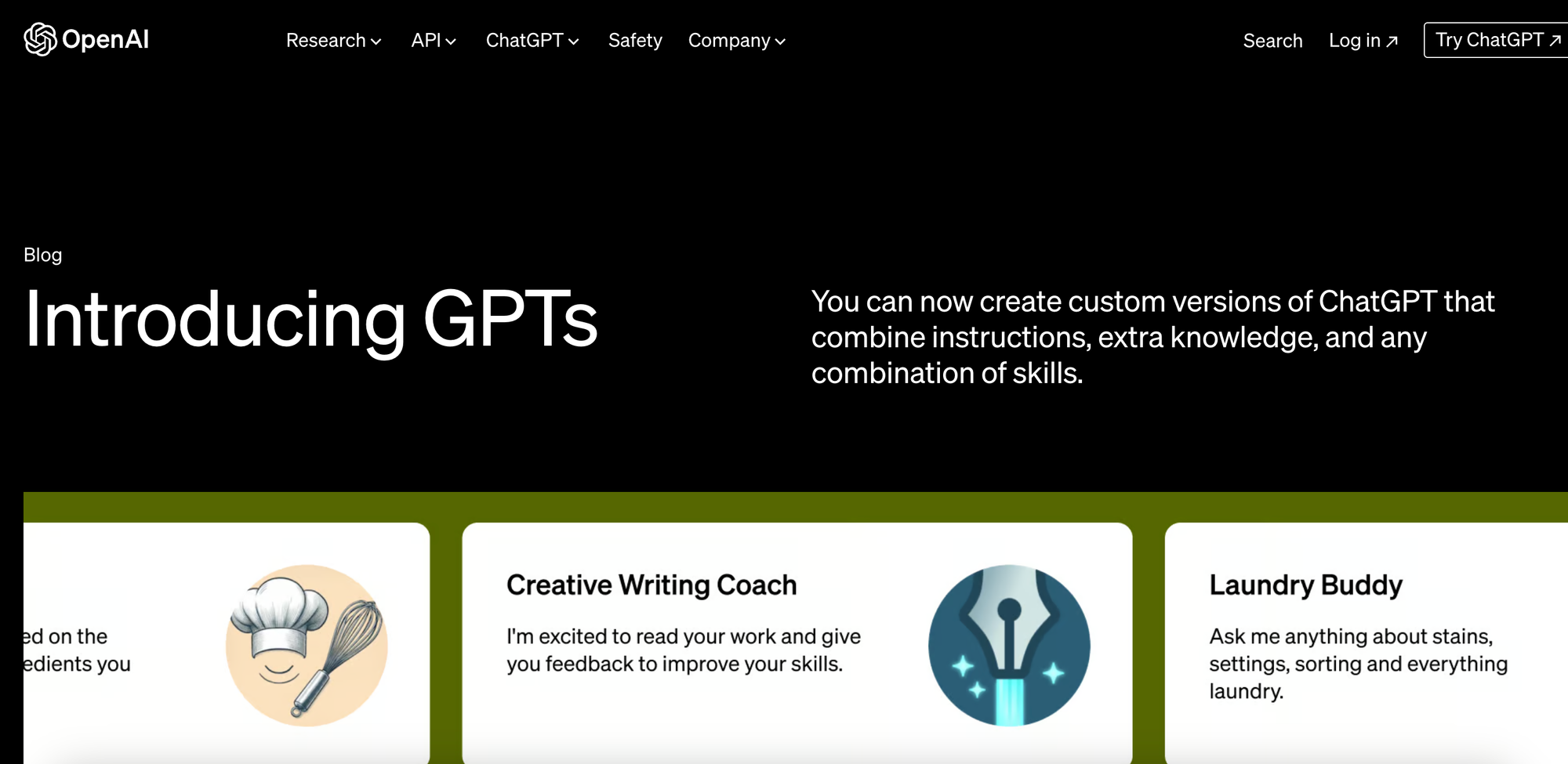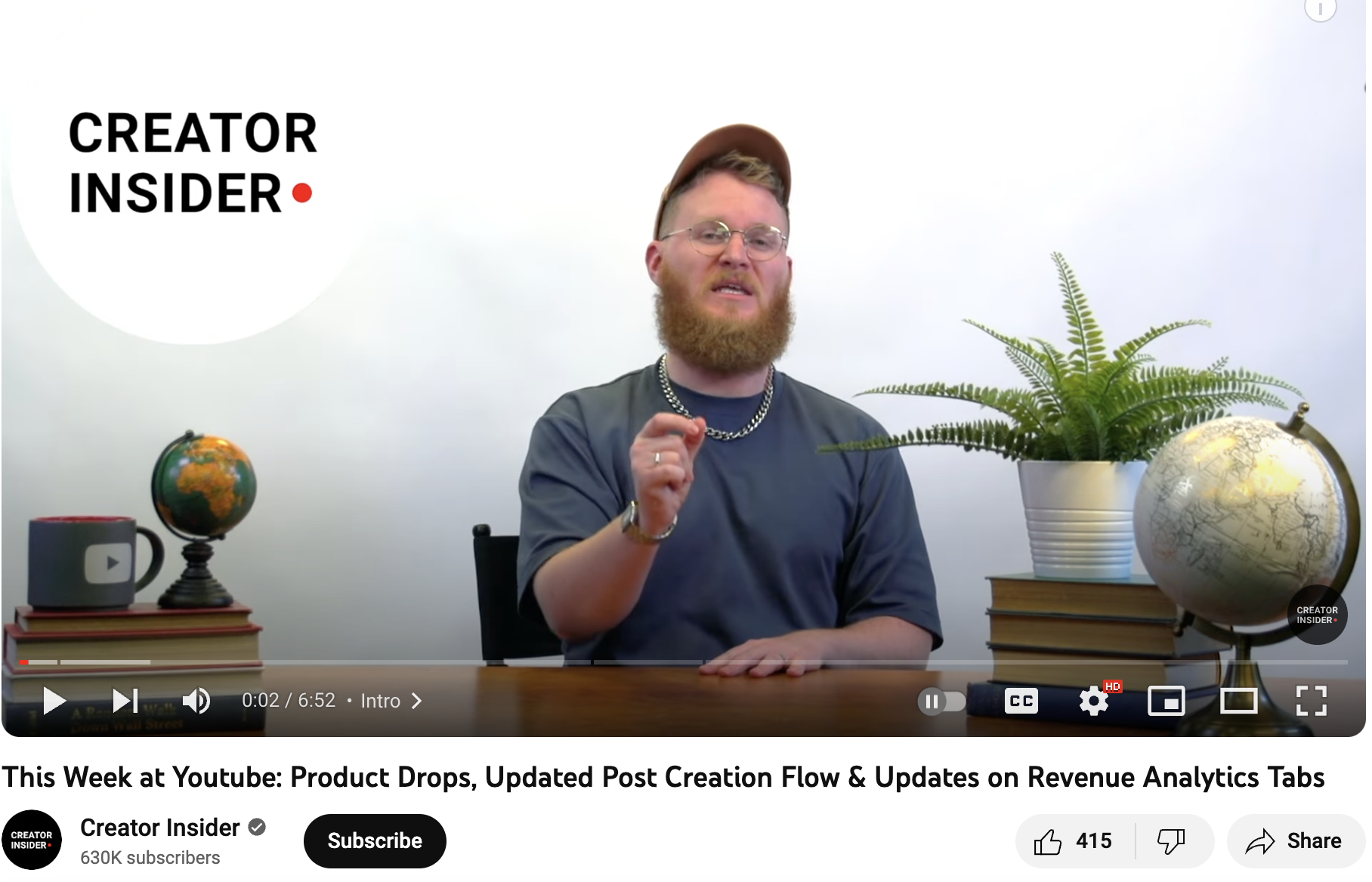Google’s November 2023 Core Algorithm Update has finished, what next?
Google’s November 2023 Core Algorithm Update has finished, what next? This is the end of the third Core Algorithm Update of the year.

Google’s November 2023 Core Algorithm Update has finished, what next? This is the end of the third Core Algorithm Update of the year. Google’s November 2023 Core Algorithm Update ran over 26 days, starting on November 2nd and completing on November 28th.
Why's it important? Whenever a Core algorithm update rolls out it is important to retrospectively analyse how the SERP landscape has changed, and how that has impacted the rankings of your website and competitors to plan your SEO roadmap.
Read on for my tips on how you could approach this analysis.
What else is happening?
- Google has added new Organization Structured Data
- ChatGPT celebrates its first birthday, and it changed the MarTech landscape in 22-23
- YouTube has added a new Product Drops feature.
Google’s November 2023 Core Algorithm Update has finished, what next?
Google’s November 2023 Core Algorithm Update has finished, what next?: Google’s November 2023 Core Algorithm Update ran over 26 days, starting on November 2nd and completing on November 28th.
Google has guidelines on why you may be seeing performance drops and what you should do after a Core Algorithm Update. Here are some key takeaways:
- There is nothing wrong with pages that may not be performing as well as before (e.g. they haven’t violated spam policies)
- Core algorithm updates do not target specific pages or sites
- It instead focuses on improving how Google’s search systems assess content overall
- This leads to pages that were previously under-rewarded performing better in the search results.

What you should do💡: You should run an analysis of how your site’s rankings changed before and after the update. However, the November 2023 algorithm update could be a challenge for many to analyse and draw meaningful conclusions from due to the number of consecutive algorithm updates recently. It was also running at the same time as the November 2023 Reviews Update.
Here are some tips on how to approach the analysis:
- Wait two weeks until after the algorithm finishes rolling out to get enough performance data. You may start your analysis around December 14th.
- Analyse two sets of data. The pre-Update date range of October 19th - November 2nd and the post-Update date range of November 28th - December 13th.
- October 19th is the day the October 2023 Core Algorithm Update ended, so you should just about have two weeks of data.
- Use Google Search Console to export Clicks, Impressions and CTR data for Pages and Search Queries for both date ranges. Deseasonalise the data to better understand the trends.
- Use a keyword ranking tracking software, like ahrefs or Semrush, to export keyword ranking data. Compare the date range of November 2nd to December 13th for rankings.
- In your spreadsheet, create four sheets: 1) Pages Increasing; 2) Pages Decreasing; 3) Keywords Increasing; 3) Keywords Decreasing. Filter the data and categorise it accordingly.
- Now, investigate the Pages Decreasing. I recommend you incorporate additional data variables, such as Last Updated, Topic Cluster and Core Web Vitals by URL.
- Try to identify patterns, ask questions such as: “Has my site performed well or badly for specific topic clusters?”, “Are the pages that have decreased in performance outdated?”, “Are the Core Web Vitals reports in GSC showing these pages decreasing have ‘Needs Improvement’ or ‘Failed’ scores?”
- Analyse the pages that have improved in rankings for the keywords that you have lost positions for. Assess how they are now better satisfying the user intent by answering Google’s suggested questions in their Creating helpful, reliable, people-first content guide.
- You can also do this process for ‘Pages Increasing’, how do they differ from ‘Pages Decreasing’?
This should get you into a position where you have a better understanding of what has changed pre and post the November 2023 Core Algorithm Update. It’s very likely that your roadmap will then focus on improving the Content Quality and “Helpfulness” of those Pages that have decreased in rankings.
Refer to Google’s guidelines on what to do if you’ve seen drops after a Core Algorithm Update, and consider how you can improve the Experience, Expertise, Authority and Trustworthiness (EEAT) of your content.
You may also have to refresh your technical SEO roadmap to address things like Core Web Vitals, broken links etc.
Google has added new Organization Structured Data
Google has added new Organization Structured Data. In this most recent addition, they’ve added new Organization Structured Data that merges the old logo and URL structured data whilst adding “name, address, contact information, and various business identifiers”.
Recently Google has been launching a number of new structured data options for SEOs to consider, including Author Profile Page and Discussion Forum structured data. My personal take is that this new structured data is going to help Google to understand EEAT in its fight against generative AI spam.

What you should do💡: I suggest you review if your site currently uses the pre-existing Organization Logo and URL markup. Work with your developers to add those if not, as well as the new fields. Google uses structured data to create its knowledge panels, and that’s an important aspect of your company’s brand SEO strategy.
If a user enters your brand name into search, you want Google to be able to display as much relevant information in the best visual way possible.
You can use the Rich Results tool to test that your new Organization structured data has been set up correctly.
ChatGPT celebrates its first birthday, and it changed the MarTech landscape in 22-23
ChatGPT celebrates its first birthday, and it changed the MarTech landscape in 22-23. The ChatGPT team at OpenAI posted an update on X (formerly Twitter) celebrating the birthday.
What a rollercoaster of a year. ChatGPT, and the boom in generative AI, has changed the MarTech landscape forever. What’s changed, and where are things going?
- A year in ChatGPT has over 180 million users, it took just 5 days to reach 1 million users
- OpenAI launched its GPT marketplace, with users being able to build Custom Agents for specific use cases. Industry commentators think this could be as groundbreaking as Apple’s App Store launch in 2008
- A recent survey suggested that 48% of marketers are now using AI to assist with generating content, with 10% planning to use it in future (Smart Insights)
- MarTech SaaS companies have been moving quickly to launch new generative AI products, such as Salesforce’s Einstein and HubSpot’s ChatSpot
- Google has announced that Search Generative Experience is coming in 2024, and has launched it in beta on Search Labs. It will likely change the search landscape forever, and it’s AI-powered answer boxes could have a catastrophic impact on informational click-through-rates for many companies.

YouTube has added a new Product Drops feature
YouTube has added a new Product Drops feature: If you create content for YouTube you will now have more options for selling products via product drops. Creators could previously do product drops and price drops via pre-planned events, but now there will be the option to do product drops on live streams via the YouTube Live Control Room.
- Here is a video outlining how you can do this over on ‘This Week at Youtube: Product Drops, Updated Post Creation Flow & Updates on Revenue Analytics Tabs’.

What you should do💡: To be eligible for product drops on YouTube, make sure you either connect your YouTube account to a first party store, such as the Google Merchant Center or Shopify. You can also sign up to be part of the YouTube Affiliate program to do this.
Once you’re set up, you can create and manage activities for tagged products to drive more engagement when doing a price drop or product drop announcement on your YouTube channel.
You’ll be able to use the Live control room to do product drops in live streams.
Subscribe to Rory's Roundup to learn more about growth marketing strategies & tactics, platform updates and MarTech news. I’ll share what matters, and how you can plan accordingly. ✌️
Rory Hope Newsletter
Join the newsletter to receive the latest updates in your inbox.
